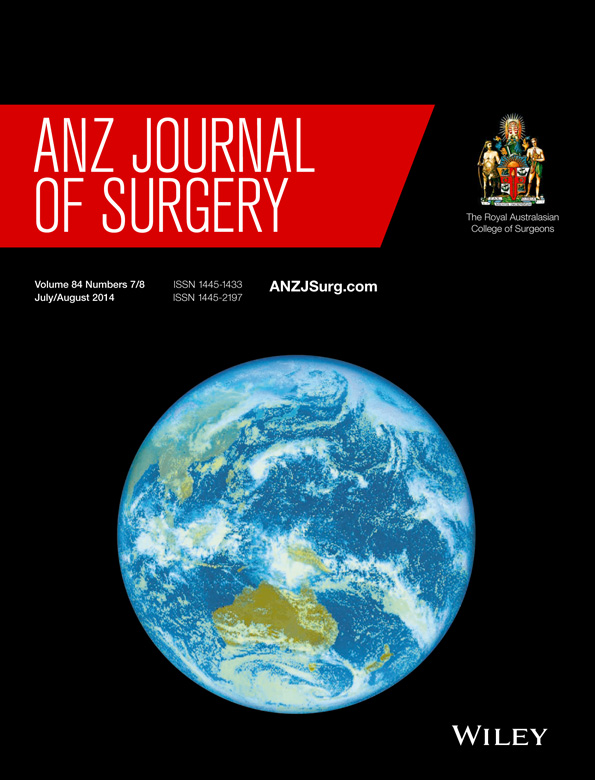Trauma verification: for the trauma centre or for the trauma system?
This month's issue of the ANZ Journal of Surgery presents a paper about the potential hurdles in meeting the resource requirements of Trauma Verification Program.1 It is timely to update and reassess the needs when the actual programme is also going through changes.
Trauma centres are ‘designated’ by state or federal government but this does not necessarily mean that these institutions meet criteria of optimal care delivery of injured patients according to the standards of trauma surgical professional body of the country. Beyond designation, trauma centres have to be also ‘verified’ to ensure the optimal medical care provision.
The Trauma Verification Program is one of the Royal Australasian College of Surgeons Trauma Committee's most important activities, which has enormous, almost immediately visible impact on trauma care delivery. The Australasian Program was developed based on the Trauma Verification Program of the American College of Surgeons Committee on Trauma. The fundamental difference between the two programmes is that the Australasian verification is performed by a multidisciplinary team (general surgery, orthopaedic surgery, intensive care, emergency medicine and trauma nursing) while the American programme is run by surgical peer-review.
The principle of peer review-based benchmarking of the trauma centres is a powerful tool to show hospital/health service administration the potential strengths and weaknesses of individual institutions' trauma care delivery.
Our trauma verification programme started under the chair of Dr Jim McGrath in 2000 with a Royal Australasian College of Surgeons grant for 24 months of pilot of six consultative visits. Forty-four site visits have been undertaken to 32 different hospitals during the last 14 years. Usually, a hospital requests a consultative visit first, which identifies needs for improvements, and is followed by a formal verification visit within a set time frame resulting in an outcome of yes or no. To date, in Australia there are only six hospitals (Liverpool, John Hunter, St George, Royal Perth, Royal Melbourne and Royal Brisbane and Women's in chronological order) that are verified as level-1 trauma centre. Personally, I consider this is a very slow uptake.
The Australasian Trauma Verification Program is currently being reviewed and updated to address the changes that occurred during the last 14 years. There are few key points need to be considered.
I believe the first and most important is to shift the aim of the Programme from verifying individual trauma centres to verifying trauma systems. Level-1 (24/7 ability to look after any injured patients with education, research and quality assurance programme) trauma centres can perform well on the verification process individually while the entire trauma system (the network of lower level trauma hospitals, pre-hospital care, inter-hospital transfer arrangements, outreach education programme) could have major insufficiencies. Also, the need and the role of individual Level-1 trauma centres will be more obvious with this approach. Some of our states are struggling with establishing their trauma system. Victoria is the usual positive example with its highly centralized system and documented improvements in outcomes, but even there only the Level-1 trauma centres had formal or consultative verification visits. Capital cities like Perth, Adelaide and Sydney have either unclear or suboptimal pre-hospital transport arrangements or far too many designated Level-1 trauma centres per population. The integration of the Australian Capital Territory into the New South Wales trauma system needs to be formalized and based on medical rather than political priorities. The independent interstate and international peer review can help to facilitate these fundamental changes. The good examples where a larger geographic area or trauma system was reviewed so far were Northern Territory (2004), Queensland (2009) and Midland Region in New Zealand (2013).
The second important change that has to happen is the adjustment of the trauma centre definitions to the Australasian specifics rather than simply adopt the North American criteria. The best example to this is that the Level-2 trauma centre (24/7 ability to treat definitively any trauma patients but no formal academic affiliation and teaching/research) is not an existing model in our countries. Any designated trauma centre, which meets the clinical care provision criteria in Australasia, are university-affiliated centres with extensive training and research programme. It is confusing that some Australian trauma centres informally call themselves as Level-2 based on the fact that they do not have all subspecialties to provide definitive care to all trauma patients.
Third, the surgical specialties have to be aware of this programme and be committed to set their specialty minimum standards in trauma care together with the Trauma Verification Subcommittee. During the last year, the Orthopaedic Trauma Society proposed the inclusion of the orthopaedic trauma surgeons into the verification site visit teams. Orthopaedic trauma surgery is the most frequent operative intervention on major trauma patients and needs to be optimally resourced at all levels of care. This includes, but is not limited to, adequate emergency and planned daytime acute list for the timely management of the musculo-skeletal injuries. Similarly, other surgical specialties need to have their suggestions on how to optimize the trauma care within their area of expertise.
I recommend to all surgeons who are involved into trauma care in the public system to feedback their trauma-related resource requirements to the trauma services of their institution or broader trauma system. The trauma services need to promote the verification process through hospital and health service administration. Trauma verification is a powerful tool to make positive changes through peer review and it bypasses the conflicts of the verified institution's administration and its employees (surgeons) in quality improvement.




